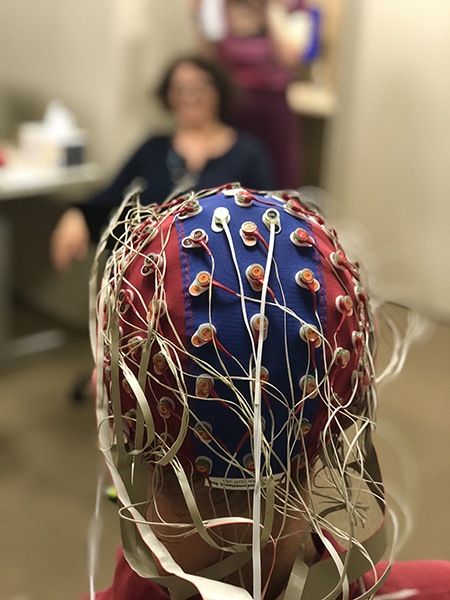Purdue researchers uncover blind spots at the intersection of AI and neuroscience

Is it possible to read a person’s mind by analyzing the electric signals from the brain? The answer may be much more complex than most people think.
Purdue University researchers – working at the intersection of artificial intelligence and neuroscience – say a prominent dataset used to try to answer this question is confounded, and therefore many eye-popping findings that were based on this dataset and received high-profile recognition are false after all.
The Purdue team performed extensive tests over more than one year on the dataset, which looked at the brain activity of individuals taking part in a study where they looked at a series of images. Each individual wore a cap with dozens of electrodes while they viewed the images.
The Purdue team’s work is published in IEEE Transactions on Pattern Analysis and Machine Intelligence. The team received funding from the National Science Foundation.
“This measurement technique, known as electroencephalography or EEG, can provide information about brain activity that could, in principle, be used to read minds,” said Jeffrey Mark Siskind, professor of electrical and computer engineering in Purdue’s College of Engineering. “The problem is that they used EEG in a way that the dataset itself was contaminated. The study was conducted without randomizing the order of images, so the researchers were able to tell what image was being seen just by reading the timing and order information contained in EEG, instead of solving the real problem of decoding visual perception from the brain waves.”
The Purdue researchers originally began questioning the dataset when they could not obtain similar outcomes from their own tests. That’s when they started analyzing the previous results and determined that a lack of randomization contaminated the dataset.
“This is one of the challenges of working in cross-disciplinary research areas,” said Hari Bharadwaj, an assistant professor with a joint appointment in Purdue’s College of Engineering and College of Health and Human Sciences. “Important scientific questions often demand cross-disciplinary work. The catch is that, sometimes, researchers trained in one field are not aware of the common pitfalls that can occur when applying their ideas to another. In this case, the prior work seems to have suffered from a disconnect between AI/machine-learning scientists, and pitfalls that are well-known to neuroscientists.”
The Purdue team reviewed publications that used the dataset for tasks such as object classification, transfer learning and generation of images depicting human perception and thought using brain-derived representations measured through electroencephalograms (EEGs)
“The question of whether someone can read another person’s mind through electric brain activity is very valid,” said Ronnie Wilbur, a professor with a joint appointment in Purdue’s College of Health and Human Sciences and College of Liberal Arts. “Our research shows that a better approach is needed.”
Siskind is a well-known Purdue innovator and has worked on multiple patented technologies with the Purdue Research Foundation Office of Technology Commercialization. For more information on licensing and other opportunities with Purdue technologies, contact OTC at otcip@prf.org.
Source: Purdue researchers uncover blind spots at the intersection of AI and neuroscience
